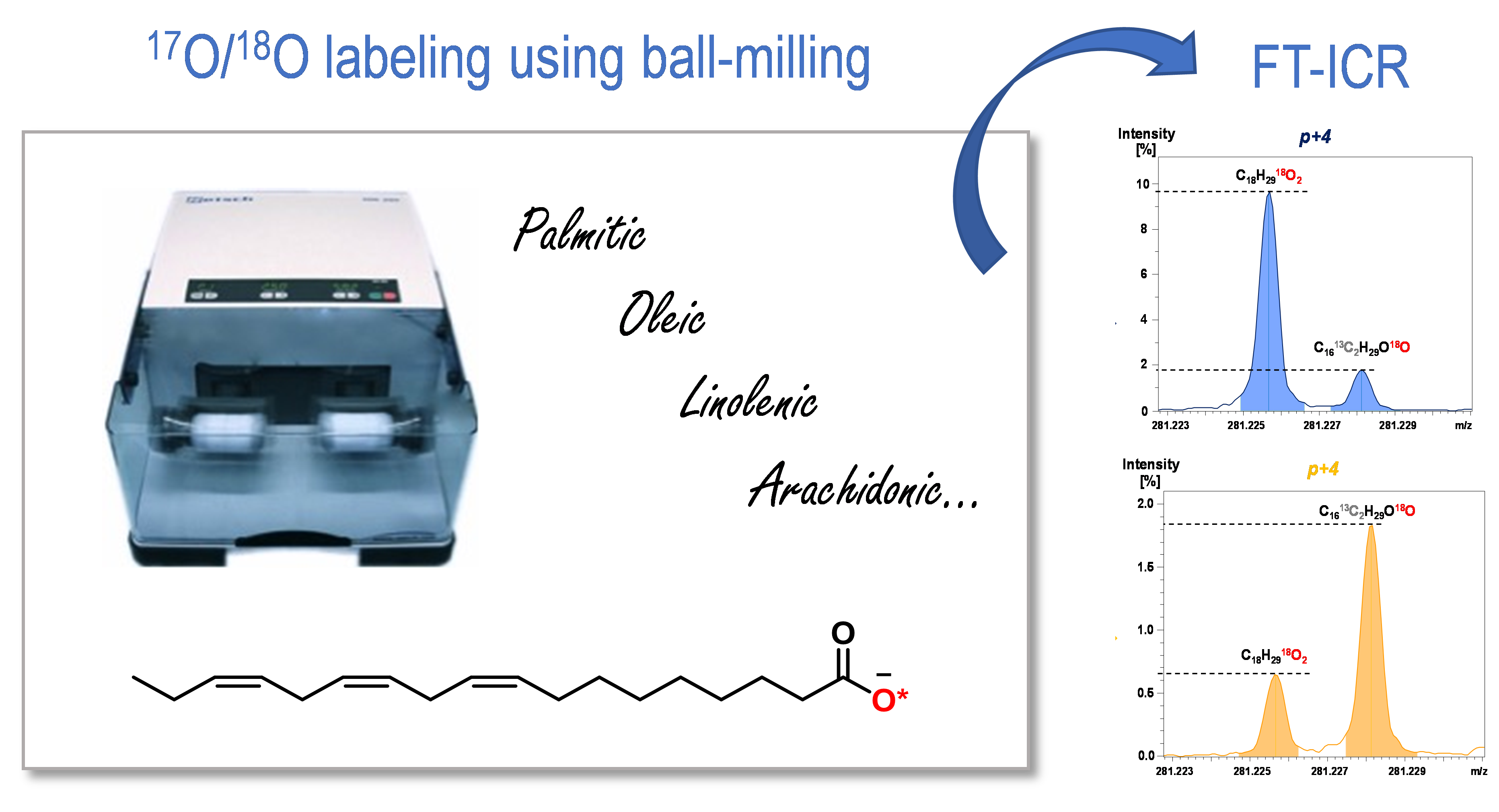How can we improve our ability to analyze fatty acid-based biomolecules and nanomaterials? Is it possible to directly probe the vicinity of oxygen atoms? CNRS researchers from Montpellier have just shown that thanks to a new route of isotopic enrichment in 17O/18O, very high resolution analyzes by solid-state NMR and FT-ICR are now possible!
Fatty acids are one of the main families of biomolecules. They are the subject of much research, in very applied or more fundamental fields, such as in biochemistry (lipidomics, etc.), or for the synthesis of (nano)materials. Despite their importance, no systematic method of isotopic enrichment in 17O/18O had until now been described, thereby preventing the use of mass spectrometry techniques or very high resolution NMR spectroscopy for the study of these molecules. A team of CNRS researchers has succeeded in developing synthesis protocols based on mechanochemistry, making it possible to enrich 17O or in 18O a large number of saturated and unsaturated fatty acids. These works, recently published in the journal Chem. Common., emphasize the many advantages of this new enrichment route, which is very inexpensive, easy to implement (synthesis at pressure and ambient temperature), and very well suited to NMR analyzes 17O high resolution and FT-ICR. For example, the FT-ICR studies carried out at the COBRA laboratory in Rouen have shed new light on the mechanisms of isotopic enrichment during ball-milling.

